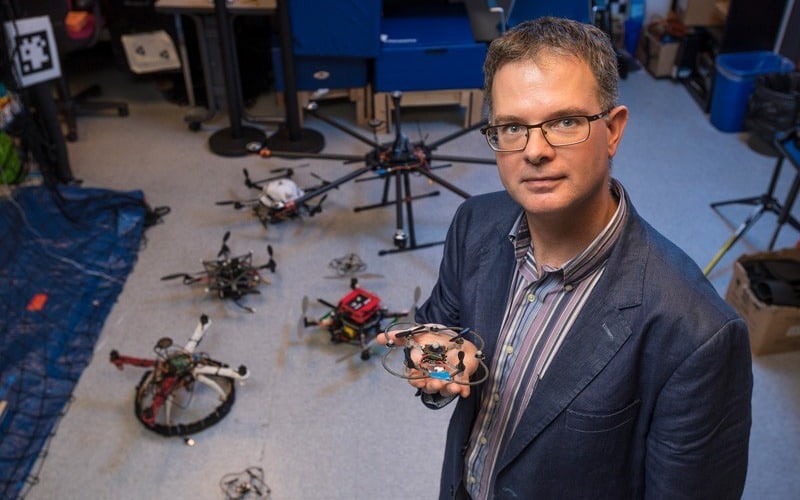RESEARCH
DISCOVERY
A Blog Devoted to UD Innovation, Excellence & Scholarship
COVID-19
Conserving the Curriculum
William Donnelly, affiliated assistant professor of art conservation, turned his kitchen into a teaching space during the spring semester of 2020. Here, he facilitates an exercise where students, tuned in via Zoom, talk him through the recovery of wet artifacts from large, plastic tubs of water.
Last spring, when the coronavirus (COVID-19) threw the country into upheaval, art conservation professors at the University of Delaware used their skills to formally assess the condition not of artifacts, but of their students. What is the treatment plan for graduates and undergraduates caught up in the coronavirus storm? Their education had thus far relied heavily on hands-on, laboratory learning, and now their classes would transition to an online format. Stabilizing objects is one thing but, in these conditions, how do you stabilize people for long-term survival in their chosen field?
For answers, UD’s experts looked no further than their own training as conservators. When it comes to preserving art, a stain or a crack or other imperfection is not necessarily a blemish to be scrubbed out or repaired. Instead, it can be an important part of the cultural heritage, a key to the story that ends up enriching the whole piece. Teaching during a pandemic? For some educators and their students, that is the crack in the vase or the smudge in the painting.
“This has been a really good growing, boundary-pushing exercise,” said Joelle D. J. Wickens, associate director of The Winterthur/University of Delaware Program in Art Conservation. “Sometimes, it takes something totally drastic to push you out of your comfort zone. You’ve been doing things the same way because that is what’s easy, and you just keep going. Then some big thing like a pandemic gets in the way, and you have to reevaluate. Often, I think, we come to a better place because of it.”
Take Nina Owczarek, assistant professor of art conservation. When the pandemic struck, her students were in the midst of documenting and treating the damage of objects — from Native American artifacts to Peruvian fly whisks — on loan from Bryn Mawr College. These items could not be taken off campus so, when the students were sent home, Owczarek improvised.
In a second-hand store in her hometown of Wilmington, she said she scoured for baskets — items that can be worked on outside a lab setting because the materials required for basketry conservation do not involve toxic chemicals. She then smushed these baskets, punctured holes in their sides and inflicted other damage for the students to cope with. Finally, she assembled take-home treatment kits that included paints, cosmetic sponges and other materials.
“Even though it wasn’t what we had necessarily hoped for, I definitely still learned a great deal about different hand skills,” said Miriam-Helene Rudd, a senior assigned to one of the baskets. “I’m very grateful for how the art conservation faculty is adapting to ensure we still get the best experience possible. Everyone at UD has been so willing to help each other in navigating this period.”




